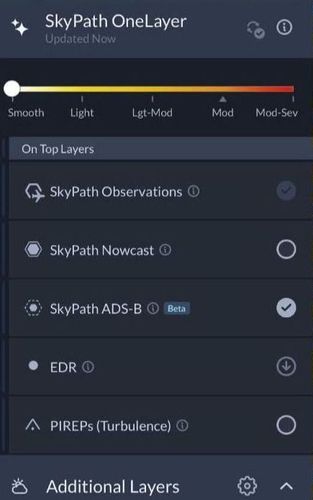A few words about myself
I started my flying career as a young Israeli Air Force flight cadet in 1975. By 1979, I was already flying F-15s. In 1993, I joined EL AL Israel Airlines, where I flew B757s, B767s, B737s, B777s, and B787s.
As a commercial pilot, one of my top priorities is ensuring the safety of my passengers and crew. This covers many areas, with turbulence being one of them.
The Unpredictability of Turbulence
The major difference between turbulence and other in-flight safety issues is its unpredictability. Generally speaking, commercial aviation is a conservative industry. For every threat, the industry will come up with a sensor or system to deal with the issue. For convective activity (mainly CB), we have onboard weather radar. For terrain avoidance, we have EGPWS. For conflicting traffic, we rely on TCAS, and so on.
Turbulence is different. Apart from turbulence associated with convective activity, there is no sensor that can detect turbulence and enable the crew to avoid the hazard. Furthermore, weather charts, SIGMETs, and forecasts generally lack the necessary accuracy to serve as a tactical tool.
In other words, no pilot will turn on the seatbelt sign just because they are about to enter an area marked with moderate turbulence on their SIG WX charts. Or, from a passenger’s point of view, having the seatbelt sign come on just after the chops have started means that the pilot didn’t really know when they were going to start.

From my position in the front left seat, I can’t recall an occasion when I turned on the seatbelt sign (or alerted the cabin crew) just because the turbulence information on my charts indicated that I was about to enter a turbulent area. Moreover, most of us will turn on the seatbelt sign with the first light chops, just because turbulence predicts turbulence. (Some of us still believe that actual turbulence is connected to the seatbelt sign in the opposite way. Meaning, it will restart a minute after you decide to turn off the sign!)
Another critical issue is the pilots sense of being responsible for the safety of the flight. It’s not just about turning on the seatbelt sign; anything above moderate turbulence may challenge your ability to control the aircraft. As rare as they may be, it takes some time to forget those cases from the upper end of the turbulence scale.
Introducing SkyPath
With a lack of reliable data, when significant turbulence starts, you may feel like you’re stepping into ‘uncharted territory’. I used to say that regarding turbulence, there are four major questions:
- When is it going to start?
- When will it end?
- How severe is it going to get?
- What are the conditions at other flight levels?
SkyPath is a crowdsourcing-based platform that provides pilots and NOC teams with real-time, precise turbulence reports and predictions. Let me start by saying this - I get to travel a lot as a deadhead crew member. While seated in the cabin, I recall many situations where I thought to myself - “I wouldn’t turn off the seatbelt sign”.
When using the SkyPath app, you get the feeling of holding a powerful tool in your hands. Suddenly, you have precise answers to those four questions. Just imagine asking ATC for “30 degrees to the right for the next 30 NM to avoid turbulence”. With the SkyPath app on your EFB, you have all the data required to do just that, in the same way that you would treat CB using your weather radar layer on your ND.
The SkyPath app is not limited to just providing turbulence information. It was designed to feed the crew with all relevant weather information, mainly for the cruise phase. But that is for my next blog post about PIREPs.
Stay tuned…




